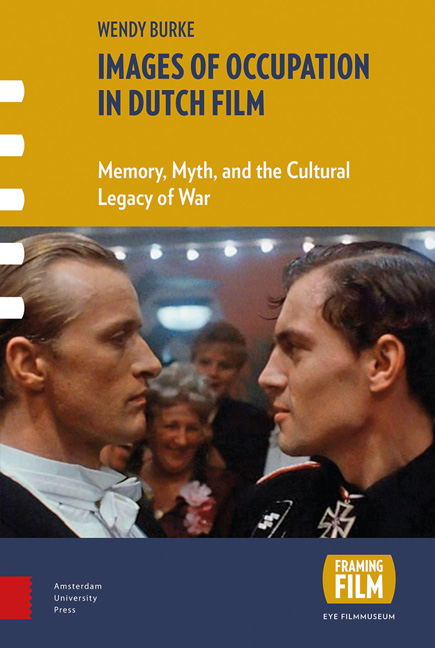Book contents
- Frontmatter
- Contents
- Acknowledgements
- Note on Translations
- List of Illustrations
- Dedication
- Introduction
- Chapter 1 Representation, Occupation, and Dutch War Films
- Chapter 2 The Image of the Enemy
- Chapter 3 Dutch Identity and ‘Dutchness’
- Chapter 4 Life Under Occupation
- Chapter 5 Resistance and Collaboration
- Conclusion
- Notes
- Filmography
- Bibliography
- Glossary of Dutch and German Terms
- Appendix Top dutch films by box office admissions
- Index
Chapter 3 - Dutch Identity and ‘Dutchness’
Published online by Cambridge University Press: 11 December 2020
- Frontmatter
- Contents
- Acknowledgements
- Note on Translations
- List of Illustrations
- Dedication
- Introduction
- Chapter 1 Representation, Occupation, and Dutch War Films
- Chapter 2 The Image of the Enemy
- Chapter 3 Dutch Identity and ‘Dutchness’
- Chapter 4 Life Under Occupation
- Chapter 5 Resistance and Collaboration
- Conclusion
- Notes
- Filmography
- Bibliography
- Glossary of Dutch and German Terms
- Appendix Top dutch films by box office admissions
- Index
Summary
In this chapter I examine images of Dutch identity and national character across the films. This entails identifying presumed core Dutch values and tendencies discernible throughout the films and analysing evidence of ‘Dutchness’. Dutchness here means apparent aspects of the Dutch personality and infrastructure and of what it means to be Dutch. These aspects of Dutchness might embrace: a sense of humour, openness, camaraderie, patriotism, religious affiliation, working life, politics, language, family dynamics, home interiors, egotism, altruism, Queen Wilhelmina, and feelings of belonging.
Alongside filmic depictions of these more anthropological aspects of Dutchness, I also consider images or sounds that are associated with the Netherlands in a more tangible everyday context. Such signifiers of Dutch identity might be: bicycles, windmills, canals, dunes, dykes, quiet country lanes, the Dutch flag, trams, cheese, cobbled streets, trees, birds, and the wider context of the natural world. I look specifically at the depiction within the films of the flat Dutch landscape and the potential of that landscape to influence, or even hinder, the progress both of the home nation defending it and the occupiers encroaching upon it. Examples of such rural images or sounds are: flatness, bare, open fields, big skies, farms, the quality of light, expansive views of the horizon, rivers and other waterways, and the weather as a backdrop to the films’ sequences. Textual evidence in these war films relating to rivers, canals, and the sea serves as a potent reminder of the Netherlands’ historical battle against the prevalence of water and encroaching water levels. It also hints at the enduring influence of water on the Dutch psyche, from the country's naval and economic supremacy during the ‘Golden Age’ of the seventeenth century to the realization that the Netherlands is a country at the mercy of water due to its low-lying position and, as a consequence, easy to invade.
This chapter briefly revisits issues of the Dutch language identified in chapter two: its close proximity in some instances to German and the repercussions of language links with regard to the ‘self’ and to national and cultural identity. We consider what it was about the Netherlands and Dutch people that interested Germany, a ‘national appeal’ from the late 1930s onwards that provoked the invasion and subsequent occupation.
- Type
- Chapter
- Information
- Images of Occupation in Dutch FilmMemory, Myth and the Cultural Legacy of War, pp. 109 - 138Publisher: Amsterdam University PressPrint publication year: 2017



